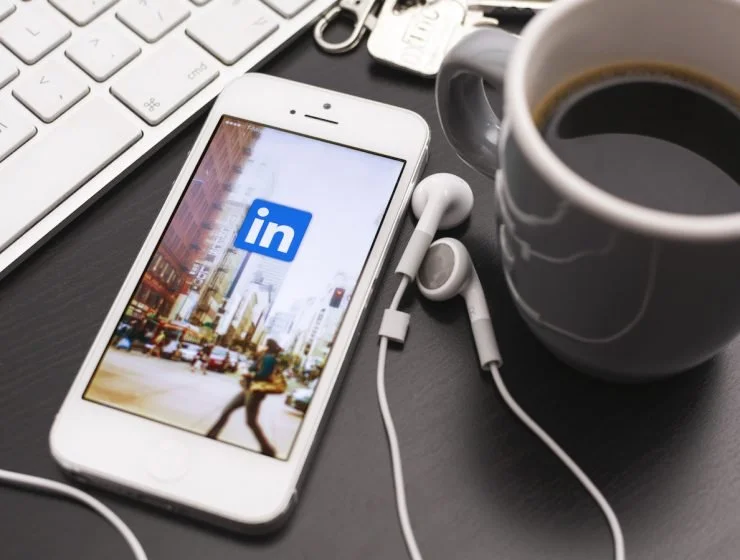3 Reasons to Join LinkedIn (Even If You Aren't Working)
“Do I Really Need a LinkedIn Profile?”
As a career coach, I often get asked by my clients whether having a LinkedIn profile is really necessary. It’s funny how they always say “really”, usually accompanied by a slight wince. These days, we all seem so overwhelmed by apps, social media, emails and more, that LinkedIn feels like just one thing too many. It is one thing most of us would rather avoid adding to our ‘to do’ list.
Thankfully, their question is very easy to answer: yes! Yes, you do need a LinkedIn profile. You do need to join the 31 million other people in the UK – and over 750 million people worldwide – who already have a LinkedIn profile. Whether you are currently working, or not. Whether you intend to return to work at some point, or not. Whether you are interested in progressing your career, or not. Regardless of your level, your industry, your location, or your expertise, you need to create a LinkedIn profile.
But Why Do I Need a LinkedIn Profile?
Over the past decade, LinkedIn has become the new phone book. It is perhaps not a perfect analogy, but bear with me. If you tried to call someone in 1990, and you couldn’t find them in the phone book (in the dark days before the Internet), you might be left wondering if you have the right details for them. Alternatively, if you found who you were looking for, then you knew that they existed – i.e. that they were verified by the telephone book publisher at least.
Well, LinkedIn performs that same function for us today. Because LinkedIn is so well indexed by Google and all the search engines, your LinkedIn profile is likely to be on the first page of any search results when someone searches for you online. By having a LinkedIn profile, the searcher knows that you exist, and they might learn a bit or a lot about you – how much is for you to decide. You are in control.
When LinkedIn first launched, certain sectors were hesitant to use it. Lawyers are a good example. Lawyers have a professional, often word-of-mouth, reputation and they were typically a bit shy to showcase their expertise and to show the world their personal, client and business networks. But the world has changed and now some of the most active users on LinkedIn are lawyers – sharing articles they have written, updating us on events they have attended, sharing their clients’ good news, welcoming new team members on board, and so on.
The world, or at least a large portion of it (over 500 million people), has got on board with LinkedIn, and you should too.
Who typically doesn’t have a LinkedIn profile?
Today if you don’t have a LinkedIn profile people might assume one of the following:
that you are not currently work and/or you don’t have a previous career;
you are senior (in age as well as level) and feel no need to catch up with this not-so-new-technology; or
you work in an environment that makes it difficult or dangerous to disclose your job.
Of course the truth might be quite different: that you are simply happy in your long term job and LinkedIn isn’t on your radar, or that you still get all your business and work from other sources and have no need of LinkedIn. This may be true now, but perhaps it won’t be forever. The future is a long time and things change, often unexpectedly. And a little time invested now could really help you later on.
But even if you never need LinkedIn yourself, perhaps other people may want to connect with you on it – perhaps you could help someone else with their career or business, either directly or through your network?
Why would I bother with LinkedIn if I am not currently working?
Earlier I said that everyone should set up a profile: “whether you are currently working or not” and “whether you intend to return to work at some point or not”.
But why?
In addition to the points made above, here are two more good reasons to set up your LinkedIn profile specifically for those people who are not currently working:
New contacts: If you have a LinkedIn profile, the new people you meet – at the school gates, your partner’s work colleagues, at the charity you are volunteering with – are more likely to know that you have a working background. It changes the conversation and the dynamic shifts: it gives you an identity beyond just “partner/mum/wife/volunteer”.
I see this often with not-currently-working mums and asking a simple question like “what did you do before kids?” is a surefire way to really get to know someone, beyond the usual kid-focused school gate chitchat.
Old contacts: With a LinkedIn profile, you can stay in touch with your old work colleagues without making too much effort. You may not envisage going back to work now, or you may hope never to go back, but if you think of LinkedIn like a ‘Facebook for work’, then let LinkedIn do the hard work of keeping you up to date with your old contacts just in case. Just in case you want to restart work, just in case you need a reference or corporate donors for a voluntary or community role, just in case you are looking for work experience for your niece, or just in case you decide to start your own business and need a network of supporters to help you. This is a network that you created when working and, even if you don’t want to return to work, it is still a very useful network for you – and you can still be helpful for your network contacts too.
So, whatever your reason for not yet having used LinkedIn, I strongly suggest that you invest some time in setting up a very basic LinkedIn profile.



